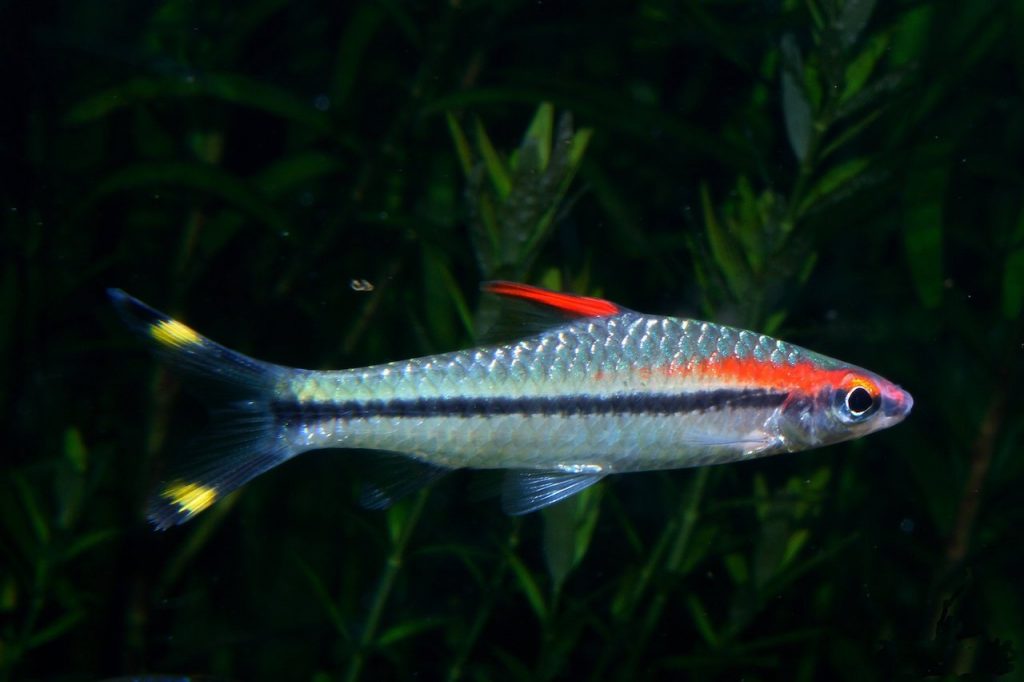
Source: wikimedia.org | Anandarajkumar
The Denison Barb (Sahyadria denisonii) is a freshwater tropical fish that can be found natively in the waters of Southern India. They are a shoaling fish and have proven to be very popular among freshwater tropical fish hobbyists mainly because of their shark-like bodies and unique coloring. These fish resemble sharks so much that they’re sometimes referred to as the Rose Line Shark or the Red Line Torpedo Barb.
This species has become so popular that wild populations are actually in danger of going extinct. They’re considered an endangered species and commercial breeders are working hard to meet the demand.
Their coloring features a black stripe that divides the fish horizontally and a red strip just above it. They’re peaceful, active and get along well in most community aquariums.
Table of Contents
Tank Considerations
The Dennison Barb is on the larger side of the barb fish family and can grow to sizes between 6-8 inches. They will thrive in a group of 6 or more so plan on having a large tank of at least 55 gallons to accommodate a shoal of these fish plus their tank mates. While a beginner should have no trouble keeping these fish healthy, they’re a bit better suited for the intermediate hobbyist because of the tank size required. The water quality these fish like is much the same as other freshwater tropical fish and is as follows: Temperature 60-78˚ Fahrenheit, pH 6.8-7.8 and dGH 5-25.
These fish have evolved torpedo shaped bodies to be fast swimmers and in the wild they use that speed to evade predators. In the home tank, you need to supply them with plenty of open areas for swimming, and you should consider a tank that’s longer than it is taller to give them the room they need. In the wild, these fish inhabit waters that flow somewhat rapidly, and you should try and mimic that in the home tank with a good filter and power heads. This will keep the water moving and richly oxygenated.
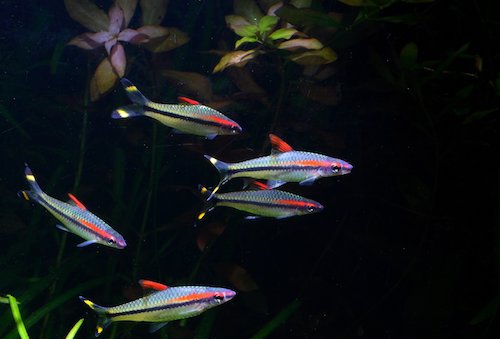
Source: wikimedia.org | Anandarajkumar
Unlike other barb fish, the Denison Barb is a bit more sensitive to changes in water quality, so you’ll have to stay on top of those water tests and water changes to make sure everything stays within the normal parameters.
Also, the Denison Barb is a jumper and will jump out of the tank if you don’t have a secure lid.
While they do need plenty of open areas for swimming, they also need plenty of dense vegetation into which they can hide if they feel threatened.
As mentioned the Denison Barb is a peaceful fish and generally does well in the community aquarium.
Health & Care
The Denison Barb is a hardy fish that’s easy to keep healthy and doesn’t easily succumb to freshwater tropical fish diseases. However, that’s not to say you can put them in your tank and forget about them. As with all fish, they will get sick if you fail to keep the water quality high and if you allow them to become stressed. Stress is perhaps the number one factor in the cause of fish getting sick. Stress can result from poor water quality, poor diet, and being housed with overly aggressive tank mates. The most common disease that affects freshwater tropical fish is white spot disease or Ich. If you’re diligent about maintaining your tank’s cleanliness, and making sure these fish get the proper nutrition, there’s no reason you can’t keep them healthy and alive for 5 years or more.
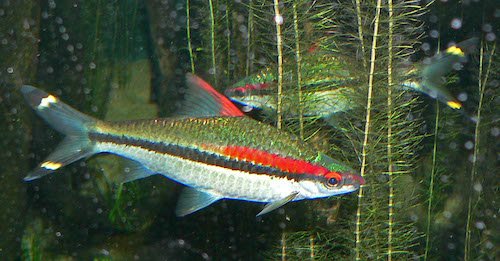
Source: wikimedia.org | Stan Shebs
Diet
As with most barb fish the Denison Barb is an omnivore and likes a mixture of both plant and animal matter in the wild. In the home tank, they’ll do well on almost any high quality flake food, which should make up the bulk of their diet. You can supplement flake with meaty foods such as brine shrimp (live and frozen) and blood worms. Also, add in fresh vegetables for variety and to keep them happy. A good rule is to feed these fish 3 times a day and no more than they can eat in 3 minutes or less. Any waste that falls to the bottom should be cleaned up quickly so it doesn’t foul the water.
Breeding
Identifying the sex of these fish can be difficult, but females are slightly larger and thicker than are the males.
Breeding the Denison Barb has proven to be difficult in the home setup and many people report that it’s happened merely by chance so not much is known on how to “make it happen.” Most successful breeding takes place in large, commercial set ups.

Source: tnaqua.org
Summary
- Fish Size: 6 inches
- Tank Size: 55 gallons
- Diet: Omnivore
- Water Temperature: 60˚ – 78˚ Fahrenheit
- Water pH:6.8-7.8
- Water Hardness: 5-25 dGH
- Breeding: Difficult
The Denison Barb is a beautiful fish and a group of them looks quite impressive darting back and forth in the tank. They’re easy to care for provided you keep the water clean and don’t subject them to drastic changes in temperature or pH. They generally get along well in a community tank and with the proper care, can provide many years of viewing enjoyment.
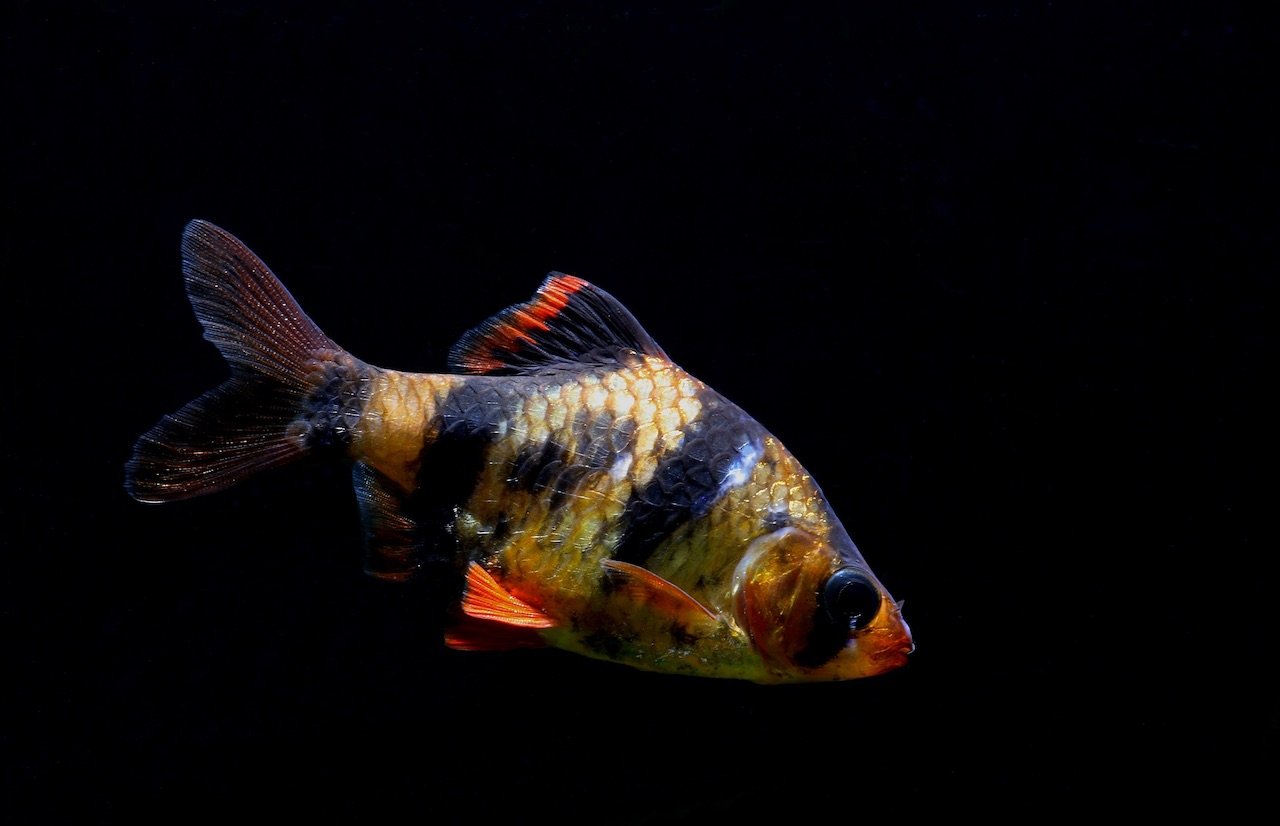
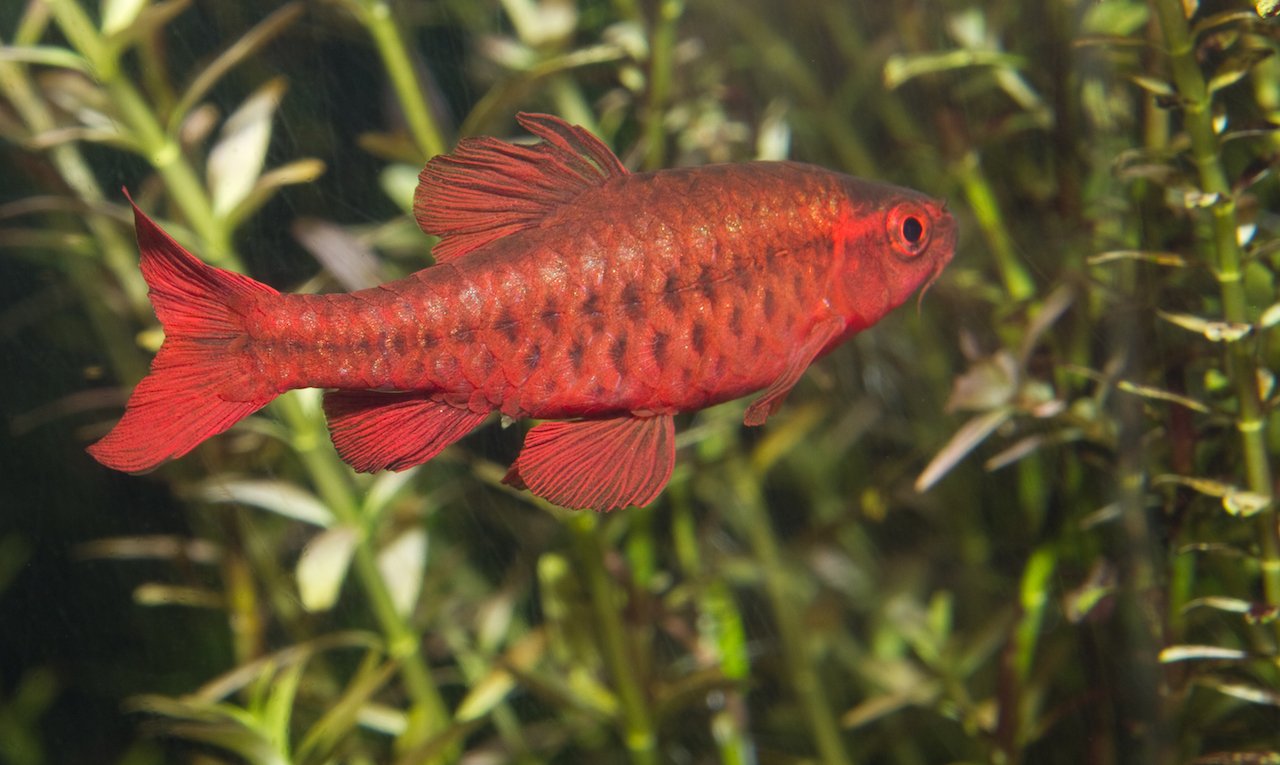
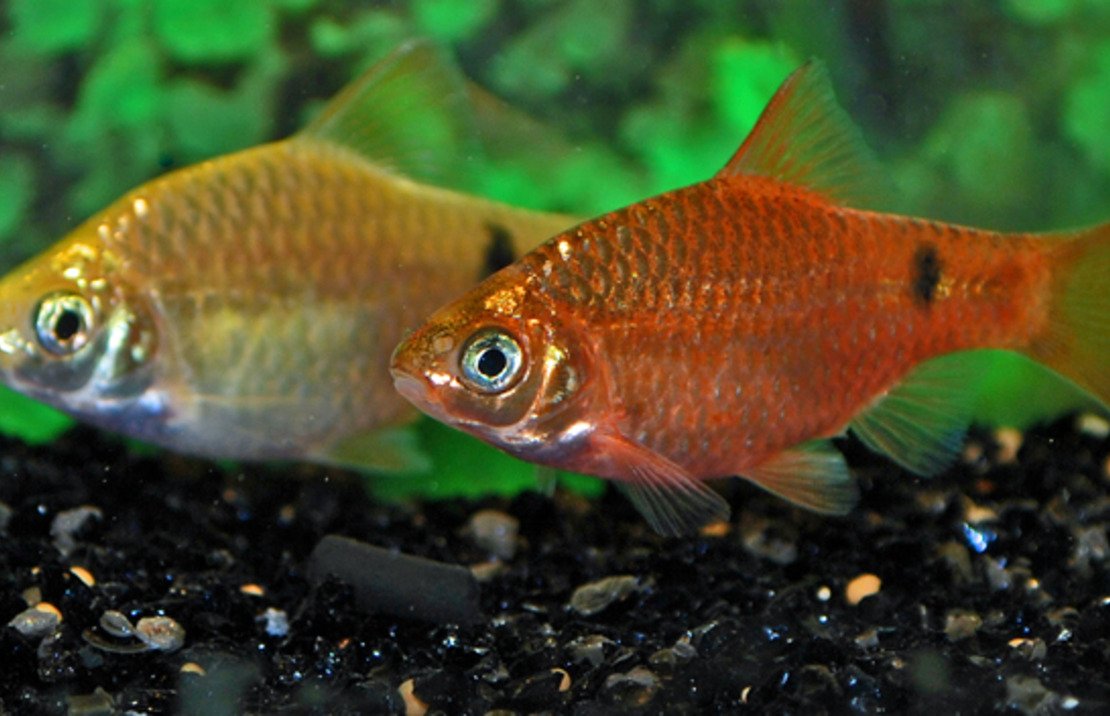
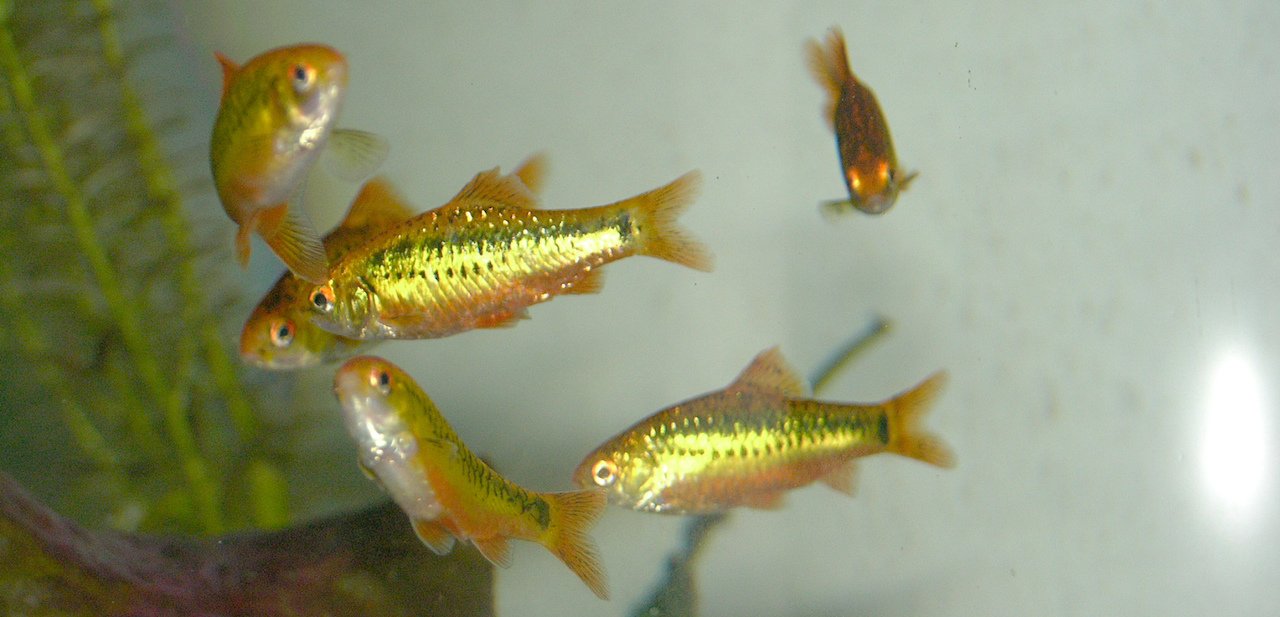

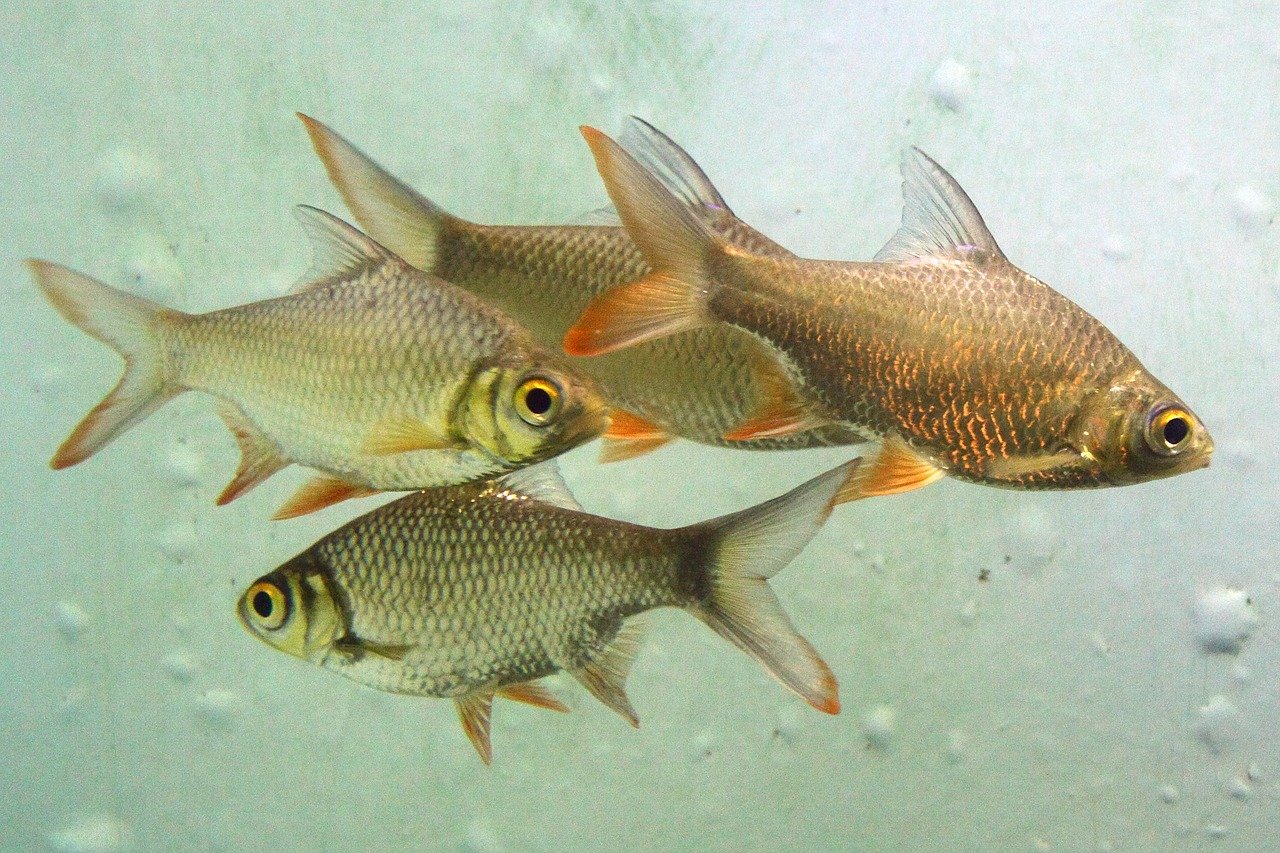
Deborah stjern says
These fish are not easy to care for!! They are susceptible to sudden death. I have tried these fish several times. I have a 200 gallon tank. I bought 3 they all died but 1. After 3 more doing the same thing. I bought 1 and was going to add 1 at a time till I had a shoul. The 2 remaining were doing great frolicking around and growing like weeds for 2 months. Next thing I know I go to feed them and those 2 are dead on the top. The day previous they were fine a swimming eating ect. I do weekly water changes my nitrates were almost unoticiable and ammonia was fine. It was heart breaking I was so excited they were doing so good. Won’t try again cause they aren’t cheap either!
Sean Winkler says
Hi Deborah,
Really sorry to hear that you had so many issues. I feel your pain and understand hot expensive fish can be. The reason behind fish getting ill and passing is a complex one with many factors. It does sound like you tested your water, and while it still could have been a factor, maybe it was something else. It’s difficult to diagnose and I wish I could help you more.
Sean